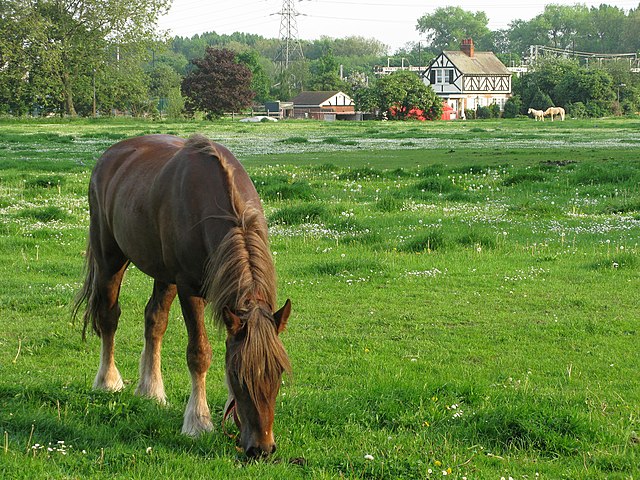A public space is a place that is open and accessible to the general public. Roads, pavements, public squares, parks, and beaches are typically considered public space. To a limited extent, government buildings which are open to the public, such as public libraries, are public spaces, although they tend to have restricted areas and greater limits upon use. Although not considered public space, privately owned buildings or property visible from sidewalks and public thoroughfares may affect the public visual landscape, for example, by outdoor advertising. Recently, the concept of shared space has been advanced to enhance the experience of pedestrians in public space jointly used by automobiles and other vehicles.
Urban space (Piazza della Signoria, Florence)
Leyton Marshes, London, an example of land with long established rights of access, and equally long-standing restrictions
Piazza del Popolo in Cesena with the artistic Fontana Masini
Martin Firrell The Royal National Theatre London 2016
A sidewalk, pavement, footpath in Australia, India, New Zealand and Ireland, or footway is a path along the side of a road. Usually constructed of concrete, pavers, brick, stone, or asphalt, it is designed for pedestrians. A sidewalk is normally higher than the roadway, and separated from it by a kerb. There may also be a planted strip between the sidewalk and the roadway and between the roadway and the adjacent land.
Raised sidewalk beside a 2000-year-old paved road, Pompeii, Italy
East India House, Leadenhall Street, London, 1766. The sidewalk is separated from the main street by six bollards in front of the building.
Pedestrians walking on the sidewalk, locally known as a "pavement" in London.
Sidewalk at Kauppakatu in Tampere, Finland.








